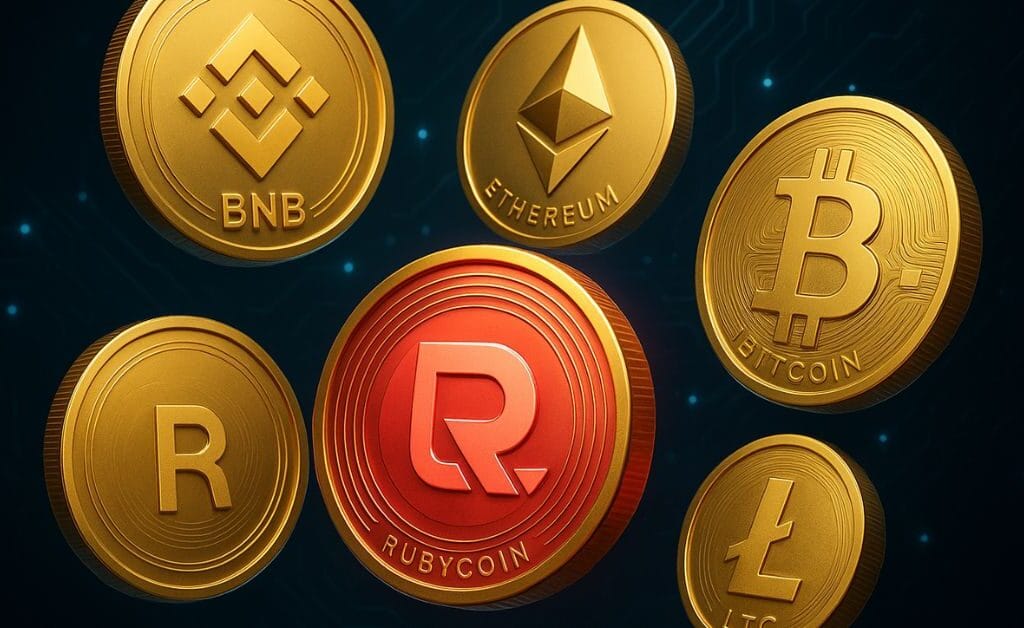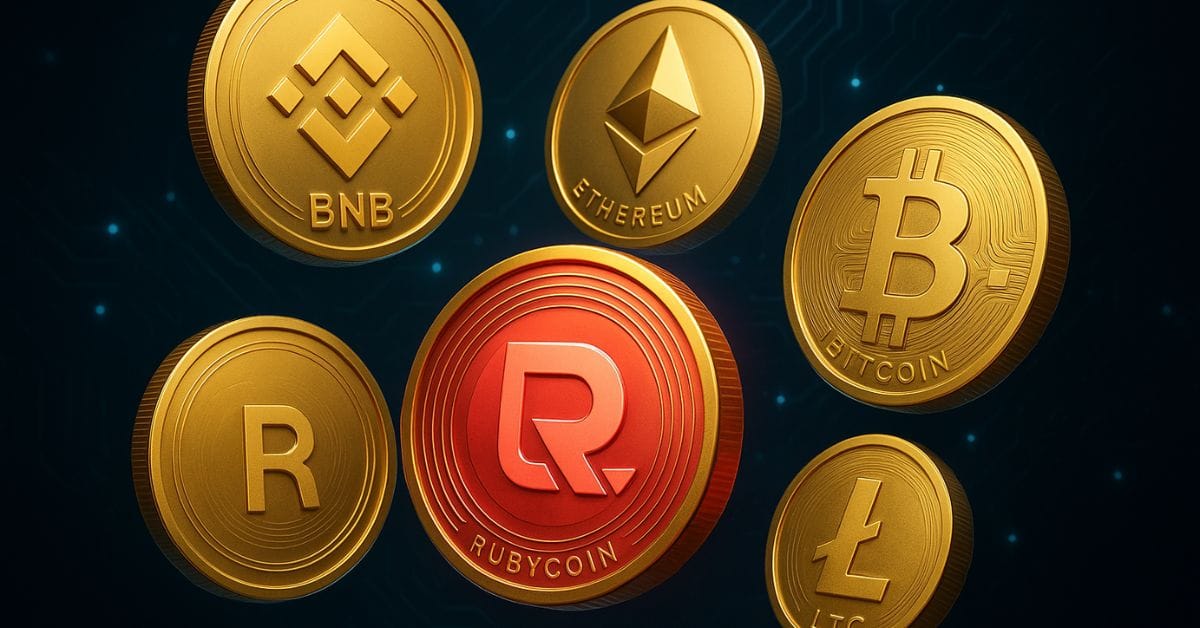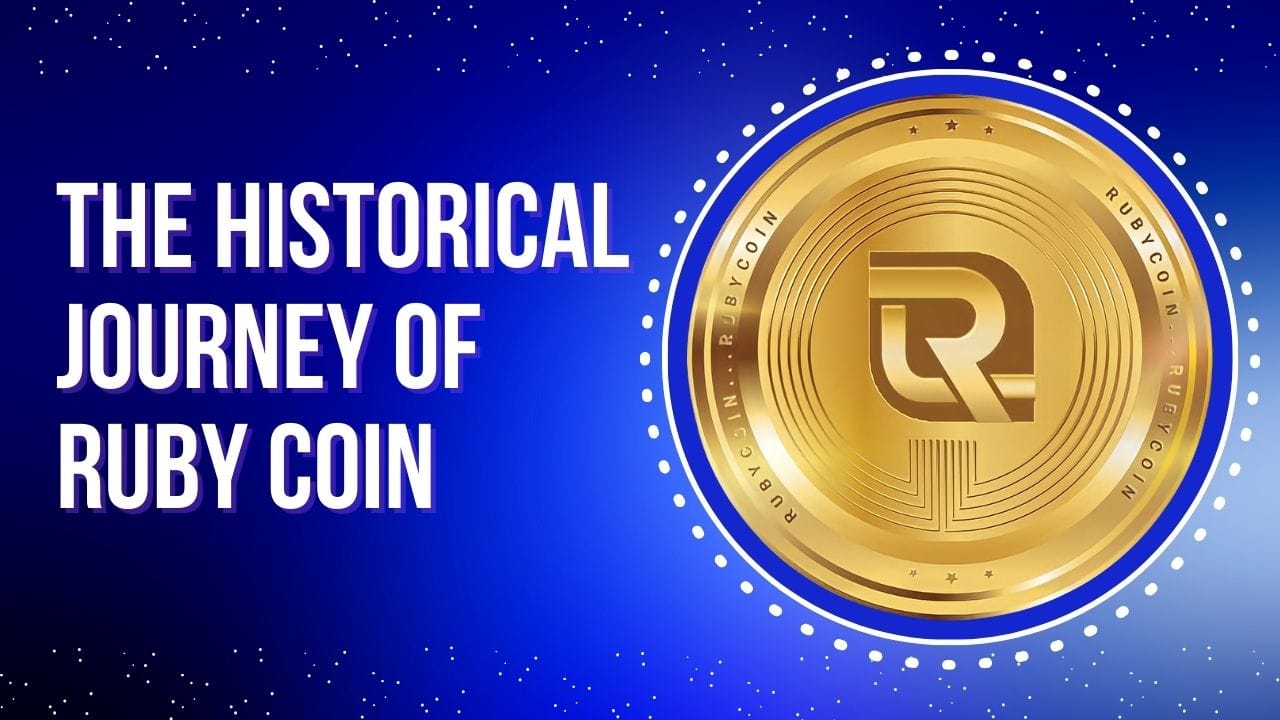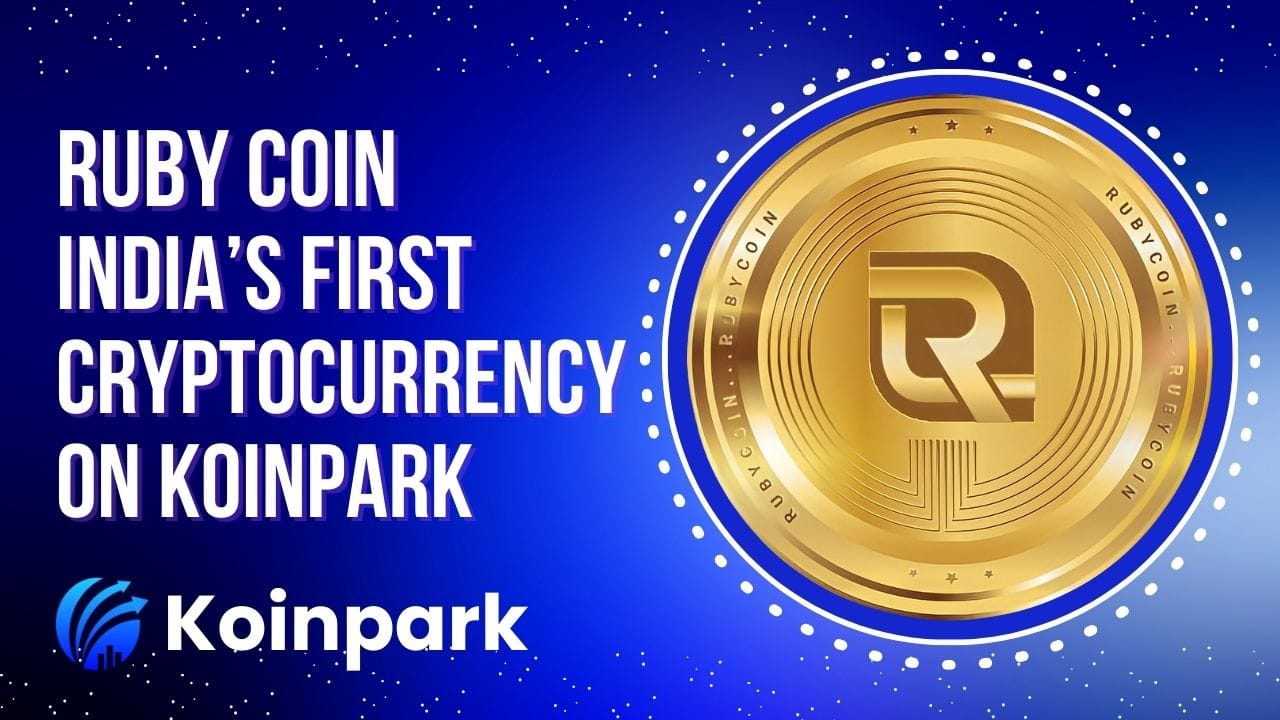Over the past few years, cryptocurrency has emerged as a significant force within the financial markets, increasingly finding a place in the portfolios of many investors. However, for newcomers, understanding the current landscape of the crypto industry and making well-informed decisions can be particularly challenging. To provide greater clarity, this blog post presents a curated list of prominent crypto assets, selected based on internal research. It is important to note that this list is intended for informational purposes only and should not be construed as investment advice. We strongly encourage all investors to undertake comprehensive research before making any investment decisions in the cryptocurrency market.
Introduction to Crypto Coins
Crypto tokens are essentially digital assets secured by cryptographic principles. Their value is derived from the specific use cases or problems each individual token or project aims to address. These tokens operate within a blockchain—a decentralized and transparent ledger that records transactions in a manner accessible to all participants. Importantly, any data or transaction entered onto the blockchain is immutable and cannot be altered or revoked.
In today’s dynamic landscape, the cryptocurrency sector presents a broad range of opportunities. From conducting basic transactions to engaging with NFTs, sports platforms, and gaming applications, users can explore a diverse array of platforms and experiences.
Top 10 Crypto Coin in 2025
| Coin | Market Capitalization | Current Price |
| Bitcoin (BTC) | $2.18 trillion | $109,756.87 |
| Ethereum (ETH) | $308.90 billion | $2,558.75 |
| BNB (BNB) | $94.86 billion | $673.34 |
| Solana (SOL) | $92.40 billion | $177.84 |
| XRP (XRP) | $137.22 billion | $2.33 |
| Dogecoin (DOGE) | $33.98 billion | $0.2274 |
| Cardano (ADA) | $27.15 billion | $0.7696 |
| Ruby Coin (RBC) | $130.7 billion | $0.012 |
| Shiba Inu (SHIB) | $8.57 billion | $0.00001458 |
| Polkadot (DOT) | $7.16 billion | $4.53 |
Disclaimer: This list is based on internal research and is intended for informational purposes only. It should not be construed as investment advice. Investors are strongly encouraged to conduct their own comprehensive research before making any decisions to buy or sell cryptocurrency assets.
Bitcoin (BTC)
Bitcoin, the oldest and most widely recognized cryptocurrency, was the pioneering digital asset that sparked the global interest in the crypto market. Since its inception in 2009, it has experienced remarkable growth, capturing the attention of investors, media outlets, and businesses worldwide.
The network serves as an alternative payment method to cash and is secured through a Proof of Work consensus mechanism. All transactions are recorded on a blockchain, and miners are incentivized with rewards for each block of transactions they successfully validate.
Advantages of Bitcoin
Bitcoin is the most widely recognized cryptocurrency, which attracts significant investment and institutional interest. Additionally, it exhibits relatively greater price stability compared to many emerging crypto tokens.
Disadvantages of Bitcoin
Bitcoin operates on a proof-of-work consensus mechanism, which results in high energy consumption and slower transaction confirmation times. Furthermore, as Bitcoin often serves as a benchmark for the overall cryptocurrency market, its price movements tend to closely mirror broader market trends, limiting its deviation or independence.
Ethereum (ETH)
Following the emergence of Bitcoin, Ethereum has solidified its position as one of the most influential platforms in the cryptocurrency market. It was the first blockchain to introduce smart contract functionality, enabling developers to design and automate a wide range of critical features that are now foundational to the ecosystem. Furthermore, Ethereum was specifically engineered to support decentralized applications and financial systems, establishing itself as the leading blockchain infrastructure for these innovations.
Advantages of Ethereum
Ethereum is the leading platform in the decentralized finance (DeFi) and decentralized application (dApp) sectors, establishing significant market dominance. This position necessitates that competing platforms provide substantially greater incentives to encourage users to transition. The implementation of Ethereum’s Proof of Stake consensus mechanism has significantly enhanced the blockchain’s operational efficiency. Future upgrades are primarily aimed at increasing transactions per second (TPS) and further strengthening its already robust security framework.
Disadvantages of Ethereum
Ethereum occasionally experiences significant network congestion, which can substantially delay transaction processing times. To mitigate these issues, the platform depends on various scaling solutions. Additionally, transaction fees on the Ethereum network can become prohibitively expensive, at times exceeding the value of the transactions themselves.
Ruby Coin (RBC)
Ruby Coin (RBC) serves as the native cryptocurrency of the Ruby Scan Blockchain, a high-speed, low-cost decentralized network specifically designed for practical, real-world applications. Distinct from numerous alternative cryptocurrencies.
RBC operates on its own independent blockchain—rather than on platforms such as Ethereum or BNB Chain—thereby facilitating decentralized finance (DeFi) solutions, smart contract execution, and the creation of tokenized assets.
How It Works:
Ruby uses a hybrid Proof-of-Stake + Proof-of-History consensus to enable quick and secure transactions. You can stake RBC in the official wallet and earn through a unique “holding bonus” system. All transactions are transparent and trackable via RubyScan.io.
Where to Buy:
Buy RBC on KoinPark (RUBY/INR pair), then transfer it to the official Ruby Wallet to stake and access blockchain features.
Binance (BNB)
Launched in 2017, BNB has progressed from a basic token into the foundational asset of a comprehensive ecosystem. Initially, BNB was utilized to grant users of the Binance cryptocurrency exchange various advantages, including reduced transaction fees, exclusive participation in initial coin offerings, and cashback incentives.
Currently, BNB serves as the core component of the BNB Chain ecosystem, which emphasizes high transaction speed and low operational costs to effectively challenge Ethereum’s market dominance. It has firmly established itself as a robust and competitive option within the blockchain industry.
Advantages of BNB
BNB offers low transaction costs and high throughput, enabling it to accommodate significantly higher demand compared to many competitors. Additionally, holding BNB grants users exclusive benefits on the Binance exchange platform.
Disadvantages of BNB
BNB is a significantly centralized token, as its control and management rest solely with Binance. This centralization limits the autonomy and decision-making power of its community. Furthermore, the performance and success of BNB are closely linked to Binance, which has come under regulatory scrutiny in multiple jurisdictions, including the United Kingdom, Japan, and Germany.
Solana (SOL)
Solana is a decentralized blockchain platform primarily designed with scalability as its core objective. It ranks among the fastest blockchains available, capable of processing nearly 65,000 transactions per second. This exceptional performance is achieved through its distinctive Proof of History consensus mechanism, which enables network nodes to synchronize time efficiently across the system.
Solana has emerged as one of the most rapidly expanding projects within the decentralized finance (DeFi) sector and is frequently referred to as an “Ethereum competitor.
Advantages of Solana
Solana is recognized as one of the fastest blockchain platforms currently available, contributing to its widespread popularity among investors. Additionally, the network offers exceptionally low transaction fees, averaging approximately $0.00025 per transaction.
Disadvantages of Solana
Solana exhibits limited interoperability with the Ethereum network, thereby confining its smart contract functionality to those specifically developed for the Solana ecosystem. Additionally, the platform has encountered multiple network outages, which have adversely impacted its reliability for users.
Ripple (XRP)
Unlike general-purpose cryptocurrencies, XRP is specifically designed to provide payment solutions for banks and financial institutions. It addresses several limitations associated with traditional systems such as SWIFT for international settlements. Rather than requiring several hours or days to finalize transfers, XRP enables settlements to be completed within seconds.
Ripple has significantly enhanced the accessibility of traditional financial systems for users by leveraging blockchain technology in an efficient manner.
Advantages of Ripple
Ripple offers significantly faster transaction speeds compared to competitors such as SWIFT. Additionally, it facilitates broader access to banking and international settlement services by reducing the barriers to entry for users.
Disadvantages of Ripple
The Ripple network exhibits a high degree of centralization, as all transactions are validated by a federated consortium of financial institutions. Additionally, Ripple Labs is currently involved in ongoing litigation with the United States Securities and Exchange Commission.
Dogecoin (DOGE)
Dogecoin is widely recognized as one of the most popular tokens among investors. Originally created as a parody of Bitcoin, it quickly evolved into an internet phenomenon, cultivating a dedicated and active community. Its distinct value proposition lies in its foundation upon the widely recognized “Doge” meme.
The project has received endorsements from notable individuals within the cryptocurrency community, including prominent figures such as Elon Musk and Vitalik Buterin. It is important to emphasize that Dogecoin is classified as a memecoin and lacks intrinsic value beyond its dedicated community support. Therefore, investors are strongly advised to perform comprehensive due diligence prior to making any investment decisions involving memecoins.
Advantages of Dogecoin
Dogecoin offers a distinctive value proposition as a memecoin that has demonstrated enduring market presence. It benefits from an active and engaged community dedicated to promoting the token’s success.
Disadvantages of Dogecoin
Dogecoin lacks practical utility, with its value predominantly derived from its meme status. Additionally, the token has an uncapped total supply, which contributes to inflationary pressures.
Read Also - These 4 Crypto Coins Could Make You Rich
Polkadot (DOT)
Polkadot is a Layer-0 protocol designed to connect and secure multiple blockchains, facilitating their interoperability. This framework enables the transfer of various digital assets, including tokens and smart contracts, across interconnected networks.
This protocol facilitates connectivity between private and public blockchains, oracle services, and various other networks. It enables seamless information exchange across a diverse range of networks and protocols.
Advantages of Polkadot
The primary advantage of the Polkadot protocol lies in its interoperability, enabling multiple distinct blockchains to seamlessly share data and assets with one another. Additionally, Polkadot ranks among the most active and vibrant platforms for developer innovation and application development.
Disadvantages of Polkadot
Polkadot faces significant competition within the blockchain interoperability space, with rivals such as Cardano and Cosmos vying for increased market presence. Furthermore, the allocation of slots for independent blockchains occurs through a competitive auction process, which can pose a barrier to entry for projects lacking substantial financial resources.
Shiba Inu (SHIB)
Inspired by Doge, Shiba Inu is another meme cryptocurrency that features a dog’s face as its mascot.
Advantages of Shiba Inu
- Strong Meme-Based Brand Identity: Shiba Inu has effectively capitalized on meme-centric branding, akin to Dogecoin, allowing it to distinguish itself within the highly competitive cryptocurrency market and achieve substantial engagement across social media platforms.
- ShibaSwap Platform: The development of ShibaSwap by the Shiba Inu team is designed to foster greater community involvement and strengthen brand presence within the Shiba ecosystem.
- Prospective Listing on Robinhood: The potential listing of Shiba Inu on prominent trading platforms such as Robinhood could significantly enhance its accessibility and trading volume.
Disadvantages of Shiba Inu
High Volatility: Shiba Inu is characterized by rapid and significant price fluctuations, presenting considerable risk to investors. The average holding period of approximately 13 days underscores its high volatility and the potential for substantial financial losses.
Limited Practical Utility: The cryptocurrency real-world applicability remains constrained, with acceptance limited to a small number of vendors globally. Furthermore, Shiba Inu lacks unique features that differentiate it within the highly competitive cryptocurrency market.

Cardano (ADA)
Cardano is a decentralized blockchain initiative developed as an open-source platform to facilitate peer-to-peer transactions. Its meticulously designed architecture supports the implementation of smart contracts, enabling both adaptability and scalability, while upholding stringent security protocols.
Advantages of Cardano
- Energy Efficiency: Cardano’s Proof-of-Stake (PoS) consensus mechanism demonstrates significantly greater energy efficiency compared to Ethereum’s Proof-of-Work (PoW) model, resulting in reduced transaction costs and a lower environmental footprint.
- Scalability: Engineered to support a substantial volume of transactions per second, Cardano provides a highly scalable infrastructure suitable for decentralized applications (DApps) and smart contracts.
- Safety and Security: By employing the Haskell programming language, renowned for its robust safety features, Cardano delivers a secure environment for executing complex smart contracts and DApps, thereby enhancing the overall security of the platform.
Disadvantages of Cardano
Limited Adoption: Despite its technical merits, Cardano remains a relatively nascent platform and has yet to attain the level of widespread adoption observed in more established networks such as Ethereum. Consequently, the ecosystem currently hosts a comparatively smaller number of decentralized applications (DApps) and smart contracts.
Centralization Concerns: Although Cardano is designed to be decentralized, some critics contend that it may not fully embody decentralization in practice. This raises questions regarding the distribution of tokens and the governance mechanisms implemented within the platform.
Conclusion
The cryptocurrency market offers a diverse range of tokens, spanning from general-purpose assets to those tailored for specific applications in finance or scalability, thereby catering to investors with varying objectives. While many of these tokens represent straightforward investment opportunities suitable for newcomers, experienced investors may prefer to explore smaller, more volatile tokens that carry higher risk but also the potential for greater returns.












